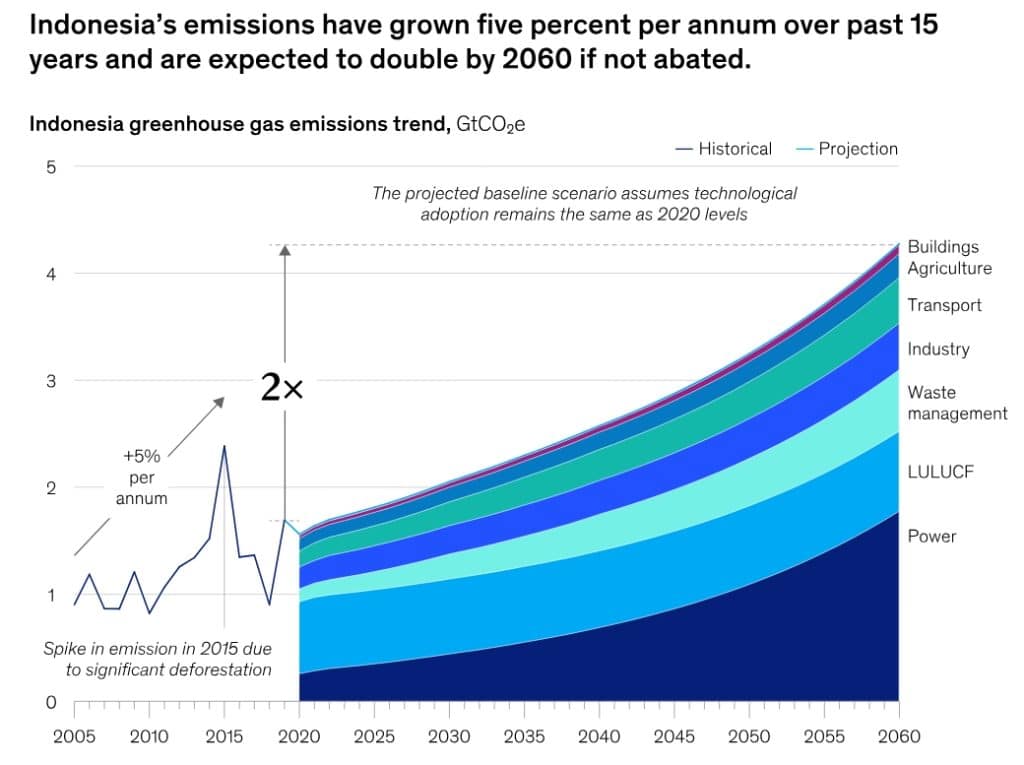Indonesia is preparing for a green revolution as President-elect Prabowo Subianto plans to launch a groundbreaking green economy fund. The fund aims to raise $65 billion by 2028 through carbon emission credits sales from large-scale environmental projects.
Prabowo intends to manage the fund via a “special mission vehicle,” which will oversee all sustainable activities in the country, including forest preservation, reforestation, and other green initiatives. This ambitious plan marks a significant step in Indonesia’s efforts to combat climate change and promote sustainability.
Unlocking the Special Mission Vehicle to Manage the Green Fund
Prabowo has pledged to raise Indonesia’s economic growth from 5% to 8% during his five-year term, focusing strongly on investments in green projects. According to Ferry Latuhihin, one of Prabowo’s climate policy advisers, this fund will play a key role in helping Indonesia meet its emissions targets under the Paris Agreement.
Latuhihin explains that a newly established regulator will oversee Indonesia’s carbon emission rules and form a “special mission vehicle” to manage the green fund. This entity will handle various carbon offsetting projects, including forest preservation, reforestation, and the replanting of peatlands and mangroves. These initiatives are designed to generate carbon credits that can be sold both locally and internationally.
Latuhihin remarked in an interview with Reuters,
“By pooling funds through this vehicle, Indonesia hopes to finance large-scale green projects without tapping into the government’s budget.”
The government has set an ambitious goal to expand the special mission vehicle to $65 billion (1,000 trillion rupiah) by 2028. While it will start with seed capital, the fund is expected to grow primarily from the sale of carbon credits. Once the fund becomes profitable, it will pay dividends back to the government.
Latuhihin also emphasized that they will adhere to international verification standards and use technology to accurately measure how much CO2 each project removes from the atmosphere.
Challenges in Carbon Credit Pricing and Sales
While the plan is bold, raising such a large sum from carbon credits will not be easy. Christina Ng, Managing Director of the Energy Shift Institute, an independent nonprofit think tank focused on Asia’s energy transition, pointed out that nature-based carbon credits typically trade between $5 and $50 per metric ton of CO2 equivalent. She noted that last year the average price was below $10 per ton.
Considering the maximum price of $50 per ton, Indonesia would need to sell 200 MTS of carbon credits annually to reach the $10 billion mark. This is still short of the $65 billion target over the next four years.
Ng further explained that at the lower price point of $10 per ton, the same amount of carbon credits would only raise $2 billion annually, making the goal even more daunting. The global voluntary market peaked at 239 MTS of carbon credits in 2021, highlighting the magnitude of Indonesia’s challenge.
Another important factor is Indonesia’s past government issues, which haven’t always been conducive to such efforts. However, if the country offers nature-based credits, the entity will need to prove its premium quality.
Leveraging Indonesia’s Nature-Based Solutions for Carbon Credits
Despite these challenges, the potential is enormous. Indonesia is one of the world’s top 10 carbon emitters and is home to the planet’s third-largest tropical rainforest. The vast tropical rainforests and peatlands offer a unique advantage in the global carbon credit market, providing ample opportunities for large-scale carbon offset projects. Latuhihin emphasized that these offset projects will reduce emissions and create significant job opportunities, supporting Prabowo’s broader economic growth plans.
Notably, Indonesia hosts the world’s largest carbon offset project, the Rimba Raya Conservation. This REDD+ project developer recently won a legal victory in Indonesia, allowing it to resume operations in Borneo.
In July, the U.S., Indonesia, and four NGOs signed the debt-for-nature swap and Coral Reef Conservation Agreement. Under the deal, the U.S. will reduce Indonesia’s debt payments by $35 million over nine years. In return, Indonesia would use these funds to create a conservation fund supporting coral reef protection and restoration. Local NGOs will manage projects that benefit both the reefs and local communities.
The McKinsey Report
McKinsey has significantly reported on how high-quality carbon credits are becoming essential for organizations, especially in high-emitting sectors like aviation, cement, steel, and oil and gas. Nature-based solutions (NBS) such as reforestation, mangrove restoration, and peatland recovery offer effective ways to sequester carbon and generate carbon credits. Emerging markets, like Indonesia, with vast natural resources, provide cost-effective opportunities with environmental and social benefits.
- Having the spotlight on Indonesia, they explained that the country holds one of the world’s largest NBS potentials, translating to over 1.5 GtCO2 in carbon credits.
With corporations increasingly committed to reducing emissions, the demand for Indonesian carbon credits is expected to grow tenfold by 2030. These credits not only support climate action but also boost local economies, improve biodiversity, and enhance soil and water quality.

Global Push to Achieve Carbon Neutrality
Reuters noted that the soon-to-be government plans roadshows and partnerships with major global banks to boost international carbon credit sales. They will target markets where carbon credits command higher prices to enhance their chances of meeting financial goals.
Despite reduced deforestation, Indonesia still faces challenges with forest fires, often caused by farmers clearing land. As the green fund advances, credible and verifiable carbon offset projects will be crucial for attracting international buyers.
By adhering to international standards and using advanced technology to measure carbon dioxide removal, Indonesia seeks to position itself as a global leader in the carbon credit market and achieve net carbon neutrality by 2060.
Disclaimer: Report compiled from Reuters
- FURTHER READING: WEF and Indonesia Join Hand to Boost Blue Carbon Credits


